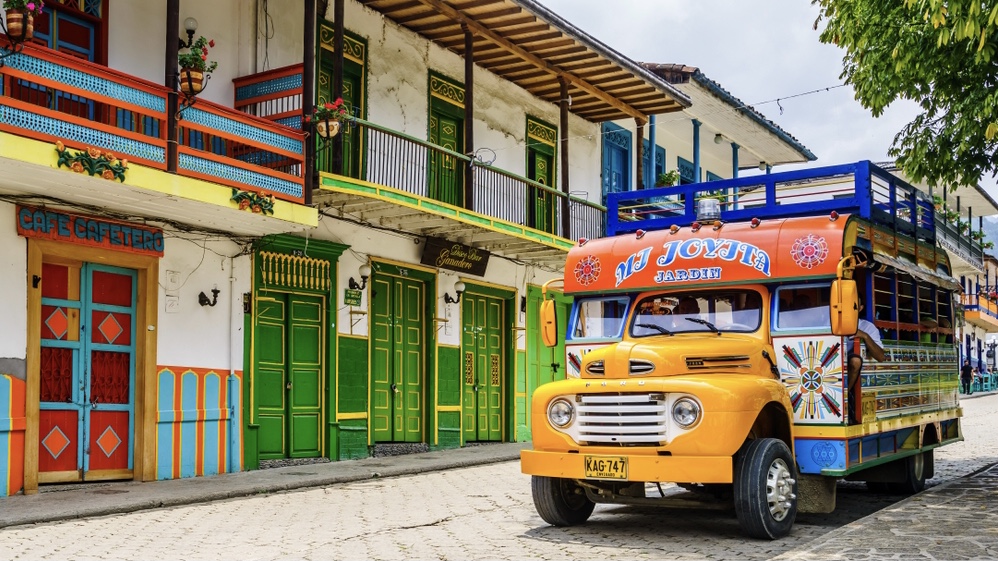When I was in Cartagena a few years back and had an opportunity to ride on one of the party buses that drove us around the city. As a tourist these buses offered a very fun way to tour the entire city with an occasional stop at sites of interest.
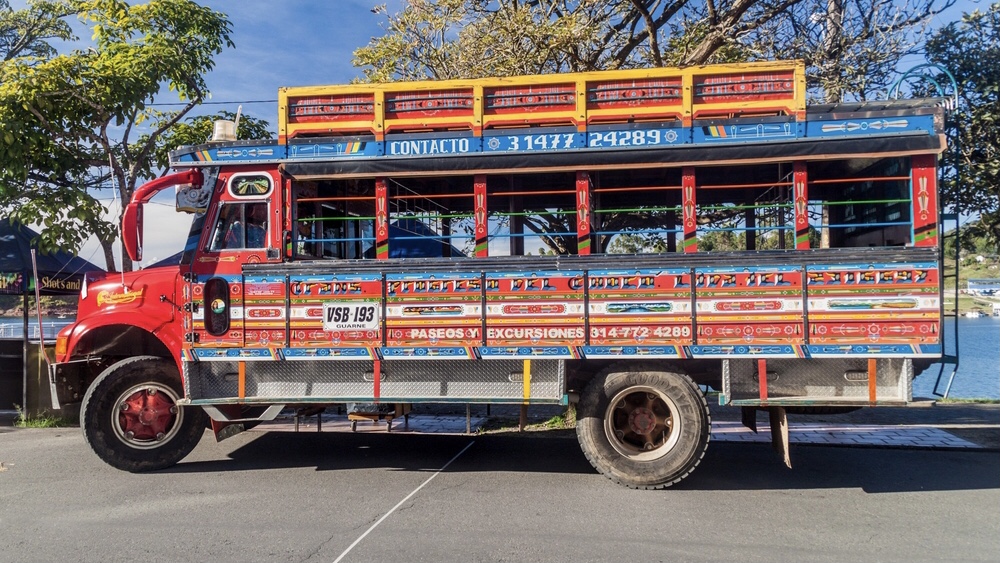
At the time I was not aware of the cultural significance of the chiva buses in Colombia for the movement of rural people to bringing of their crops and livestock to market. The rural roads of Colombia and other Latin American countries are often rugged mountainous and difficult to navigate.
From history books, I’ve read that the idea of the chiva or escalera (ladder) buses was introduced by a Colombian engineer Luciano Restrepo and mechanic Roberto Tisnes in 1908. They acquired a bus chassis from the United States and produced a vehicle of substantial strength and endurance for use on the rural roads of Colombia.

In some old Colombian writings, there is a reference to the first engine powered automobile to arrive in Rionegro Colombia in 1922 to be an escalera truck.
Prior to the introduction of the first chiva bus, the farmers transported their crops by horse-drawn carts or push carts. The most fertile areas for growers in Colombia are in remote, mountainous areas. Delivering their crops to market was always a difficult task.
The first chiva bus was used by the farmers in the department of the Antioquia which surrounds the Colombian city of Medellin. The city of Medellin is in a large ravine surrounded by very mountainous areas.
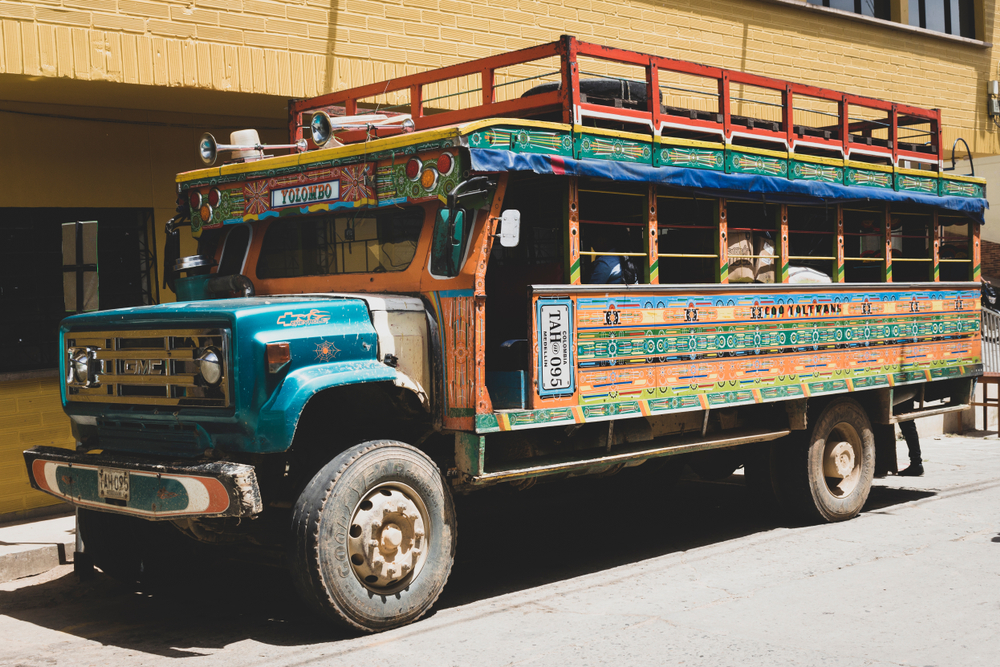
In Spanish, the word chiva means “goat” but in Colombian slang it also means “news”. These buses became a connection source between the rural areas. In addition to moving crops and people, they also moved news between towns which enhanced the interaction between people of the various remote regions.
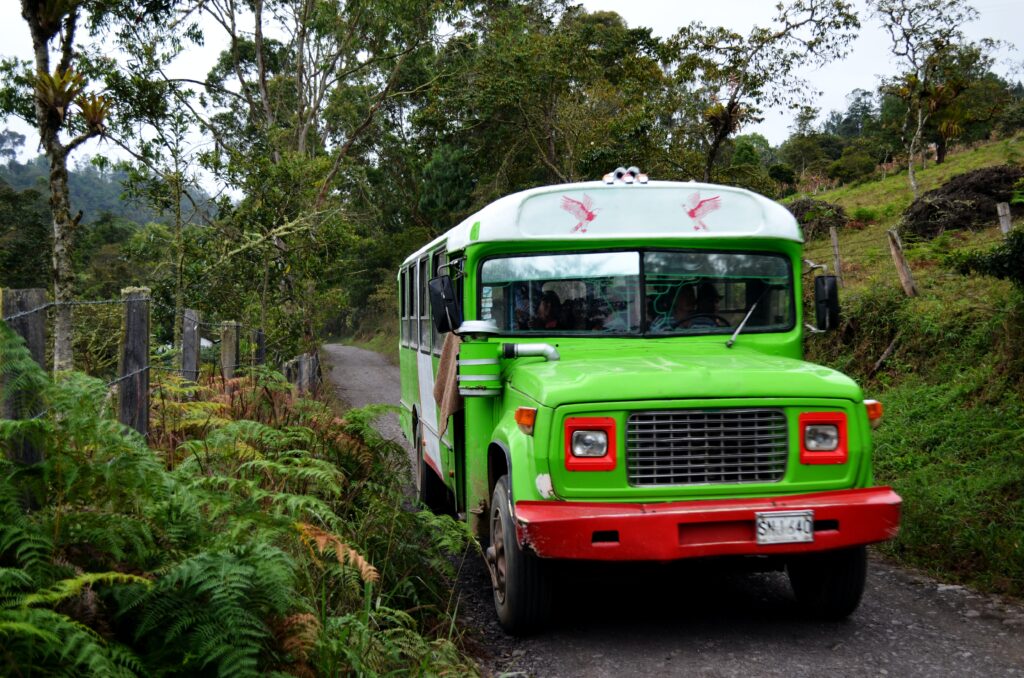
The chiva bus is not just a historical part of Colombia’s past but continues to this day to serve the outlying people. They are a vital form of transportation to connecting the people of Colombia. People ride these buses to attend school, visit friends and family, add to move goods and crops to the city markets. Public transit in the form of these buses is one of the few options available to these people. Private car and truck ownership continues to be uncommon in Colombia. Arranging rides in these remote locations with a taxi driver is difficult, expensive, and less conducive if one has stuff to move as well.
Another form of transportation that is also popular on these mountainous roads is the “Jeepao“, similar to the chiva bus, but in a Willys Jeep
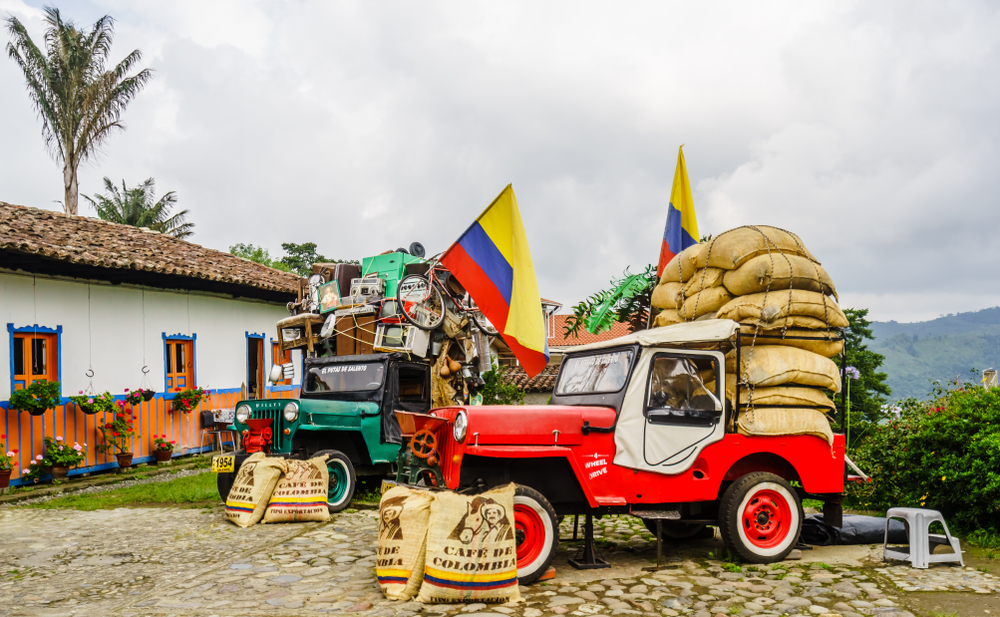
These buses stand out as they are often brightly painted with colors of Colombia. The buses are workhorses, but the joyful Colombia people want to make sure that they are celebrated with happy colors. Little did I know that my tourist ride experience on a party bus was such a nod to the tradition and culture of Colombia and its heritage.
DISCLAIMER: This description contains affiliate links, which means that if you click on one of the product links below, I’ll receive a small commission. This helps support the channel and allows us to continue to make videos like this. Thank you for the support!
Through Patreon you can help support our YouTube channel, Facebook page and website blog – Please be generous as we could use your support. Thanks.
Special Offer for US residents = GetUpside is an app that gives you cash back when you get gas. Promo code H6EU4Y gets us both a 15¢/gal bonus.

Curious Perro is a view of our world through this Gringo’s eyes. Through my video lens, my mind and my words, I will take you on fantastic trips and adventures. Please Follow me and like me on Facebook, Subscribe and like me on YouTube and Join the Adventures on my Blog — Watch On and Read On!!!

